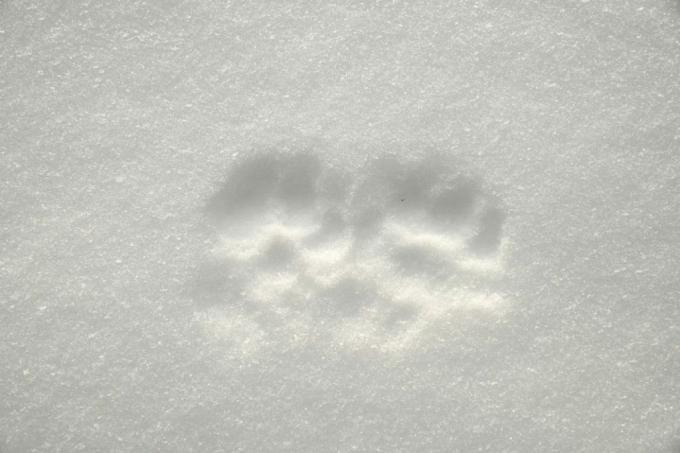
table of contents
- Different tracks
- Recognize marten tracks
- frequently asked Questions
Animal tracks are particularly easy to see in the snow. Marten tracks have characteristic features and are therefore easy to distinguish from cats and co. We'll tell you what to look out for when determining.
In a nutshell
- about five inches long and four inches wide
- sickle-shaped bale
- five toe prints with claw prints in front of each toe
- offset and clearly visible when running slowly
- side by side and blurred when jumping
Different tracks
Depending on how fast or slow a beech marten moves, its prints in the white snow look very different. If the animals want to be fast, they jump - comparable to brown hares - and both paws come up next to each other. In addition, the rear paws then usually fall into the tracks of the front paws that appeared before, so that no clear imprint can be seen - the marten track appears blurred. The paw prints can only be seen clearly and offset from one another when moving slowly.
Note: The type of snow also influences how clearly animal tracks can be seen. Deep, solid snow is best for reading tracks. If, on the other hand, the white splendor is damp or powdery, the prints remain indistinct.

Recognize marten tracks
In contrast to many other wild and domestic species that run through the garden, the tracks of the marten have these distinguishing features:
- five toe prints
- clear claw marks on each toe
- Ball looks like crescent-shaped sickle
- about 3.5 to 5 inches long
- 3 to 4 inches wide
frequently asked Questions
Cat or dog tracks can be clearly distinguished from marten tracks. The most important differentiator is the number of toe prints: the stone marten has five toes, but cats or dogs only have four. In addition, clear claw marks can be seen on marten, but not on our pets.
Similar traces to the stone marten in the wintry white splendor are also left behind by related species such as badgers and polecats. However, a badger's paw prints are much larger than marten tracks - up to seven centimeters long and also wider - and those of the polecat are much smaller. Even Raccoon dogs leave similar prints, but they are only four-toed - just like the fox, by the way. The tracks of raccoons, on the other hand, look like small handprints.
Neither the tree nor the more common stone marten hibernate - on the contrary. Instead, the animals become even more a nuisance in the cold season because they look for warm retreats and therefore like to stay in attics (especially those with thick thermal insulation), in partition walls, in a protected garden shed or under the hood of the car at home set up.
